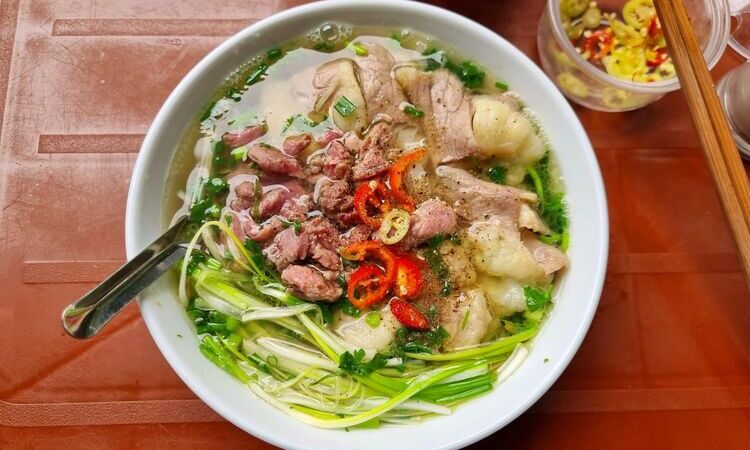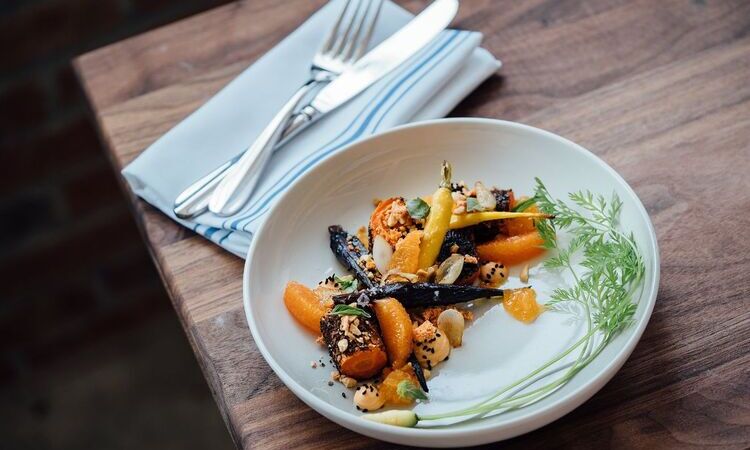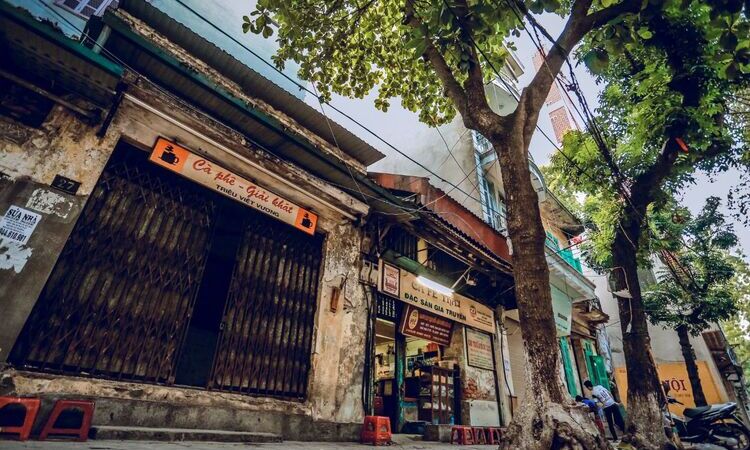Vietnamese Cuisine Culture
The thousand-year-long history of wet-rice cultivation also has a great impact on Vietnam cuisine culture.
One of the most effective ways to discover a culture is to start with its cuisine which keeps inside it a long history of that country and stories about culture and people.
Few countries in the world reward a culinary adventure more than Vietnam, whose reputation is predominantly in hawker food. You can find good food at every local restaurant and food stall on every corner of the city. Street chefs create a fantastic array of Viet food on large pans on the sidewalk while long lines of diners wait patiently for a good thing to satisfy their appetite.
In this blog, join us on the journey to explore Vietnamese Food. We will reveal everything about the common characteristics that make Vietnamese cuisine so unique and delicious.
1. Vietnamese Cuisine Culture and Elements To Create It
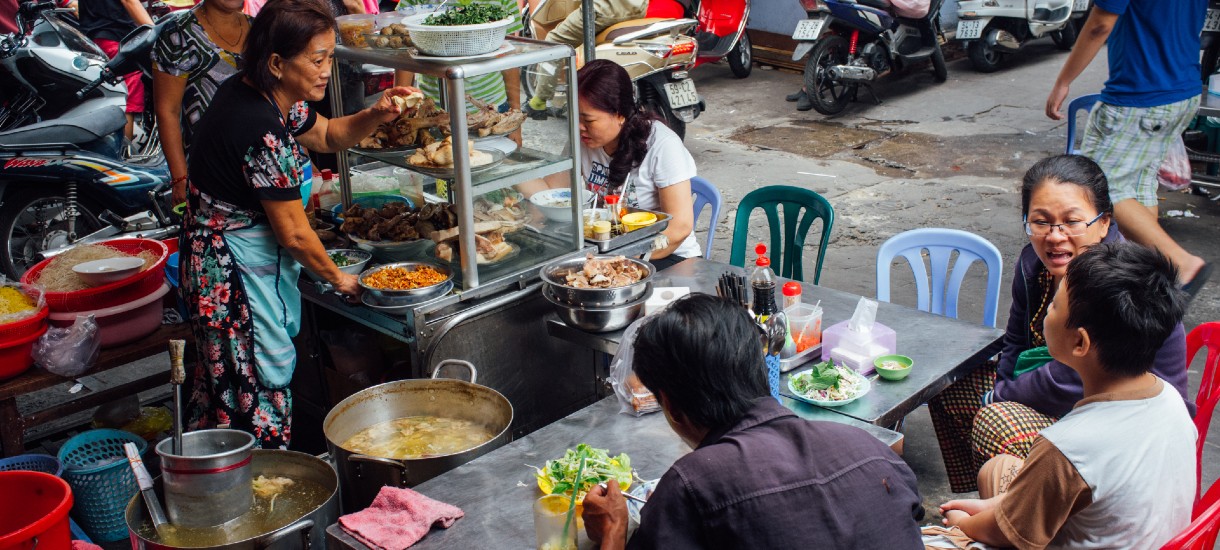
Busy street food scenes seen every where in Vietnam.
There are many elements combined to create such a unique cuisine that Vietnam is proud to have. Below, you will find 6 elements that play important roles in introducing Vietnam to the world's food map.
- Wet-rice Agriculture: The wet-rice cultivation has accompanied Vietnam throughout its history and marked a great impact on Vietnam's food. Rice is the main dishes for every Vietnamese family for thousands of years. From rice, Vietnamese people know how to create a hundred of dishes for breakfast, lunch, dinner, supper, and snacks.
- The Combination of Yin and Yang: Vietnamese cuisine, like many other Asian countries, emphasizes the balance of yin and yang. For instance, Vietnamese restaurants often serve hot spices such as chili, ginger, and lemongrass (Yang ingredients) to balance the "cold" of seafood.
- The Dominance of Fresh Herbs And Vegetables: Go to any local market (or wet market) in Vietnam you can see local herbs and fresh vegetables is dominant in most regions of Vietnam. That’s why Vietnamese food is considered one of the healthiest cuisines in the whole world.
- The Major Spice - Vietnamese Fish Sauce: Vietnamese people like to use fish sauce - a sauce made from fermented anchovies and salt, to season their dishes and to make a variety of sauce.
- The Food-Sharing Culture: In western countries, meals are often served in portions for each person on their own dishes. But in Vietnam, everyone will enjoy the meal together while chatting about daily basic topics. They usually give food to others to show respect and love. Sharing means caring here.
- Tasty Dishes on The Sidewalks: If you want to taste the true essence of Vietnamese cuisine, no need to head to fancy restaurants. Join the locals at plastic tables. That’s the most authentic dining experience for sure.
From North to South, the sames food varies to people's preference. As the country is divided into 3 distinctive regions with different kinds of weather, geography, and history, the dishes also differ in ingredients, tastes, and flavors, representing the soul of each region and the locals’ way of life.
2. Northern Vietnam Cuisine. A Light Yet Exquisite Taste.
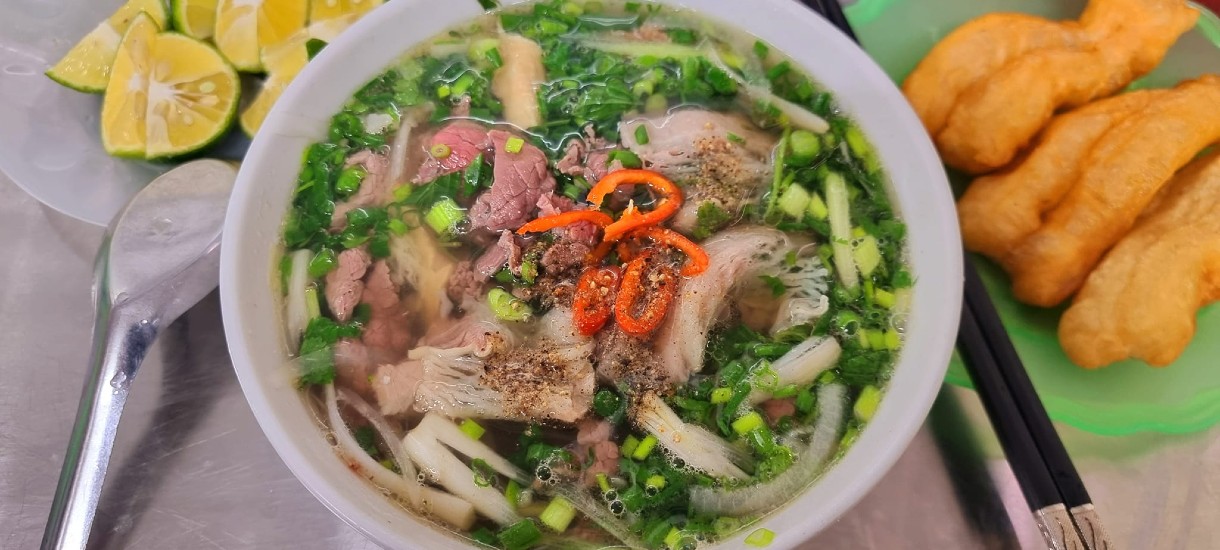
Vietnam Pho Noodle Soup - one of the most popular dishes in Hanoi
What you eat is what you are. That saying perfectly describes the main characters of Vietnameses who live in different regions of the country. People in the north are always considered as reserved and elegant, just as their cuisine which is identified with three main elements
- Light yet Exquisite Taste: The Red River Delta civilization has brought a long-established food culture to the north of Vietnam. Favored by nature with pleasant weather, food in the north has an exquisite taste that is lighter than it is in other parts of the country.
- High Respect for Traditional Recipes: Northern dishes rarely alter the traditional recipes, but strictly follow the ancestors’ direction. The Northerners believe the recipes of the old are the best and were passed from generation to generation. So most of the local restaurants in the north are family-run restaurants, with traditional recipes none can resist.
- Various Versions for A single Dish: Depending on the ingredients and cooking techniques, one can have various versions. Take Vietnamese noodles as an example. With different shapes, sizes of the noodles, and the way it is served, they have multiple versions of noodle dishes that taste as good as Pho.
4 Must-try Dishes When You Travel To Northern Vietnam
.jpg)
Spring rolls - a fresh and healthy dish.
1. Pho (Highly recommended): Named as one of the top 50 most delicious foods on the planet according to CNN, Pho Vietnam is the most favorite breakfast in Hanoi. It is basically rice noodles served with sliced beef or chicken. Anthony Bourdain fell in love with this “lovely bowl of goodness” during his food steps in Hanoi.
2. Bun Cha: The dish that captured the former US President's heart, is a flavorful creation with rice noodles and charcoal grilled pork. The smoky and aromatic flavor of the grilled pork blends astonishingly well with the sweet-sour sauce, and fresh herbs.
3. Banh Cuon: The steamed rice rolls is filled with minced ear mushrooms, and ground pork, then topped with fried shallots. The light taste of chewy, soft rice rolls makes it a go-to dish for breakfast or snacks for many Hanoians.
4. Spring Rolls: Shrimps, noodles, veggies are wrapped up in a sheet of rice paper then dip in sweet-sour sauce. This fresh, healthy food are popular in many restaurants in Hanoi. Spring rolls have another version that is equally famous. Ground meat, mushrooms, and diced vegetables, rolled up in a sheet of rice paper, then deep fried. This friend spring rolls are crunchy outsite and juicy inside with a perfect blend of different textures and flavors.
3. Central Vietnam Cuisine. The Traits of Royal Delicacies.
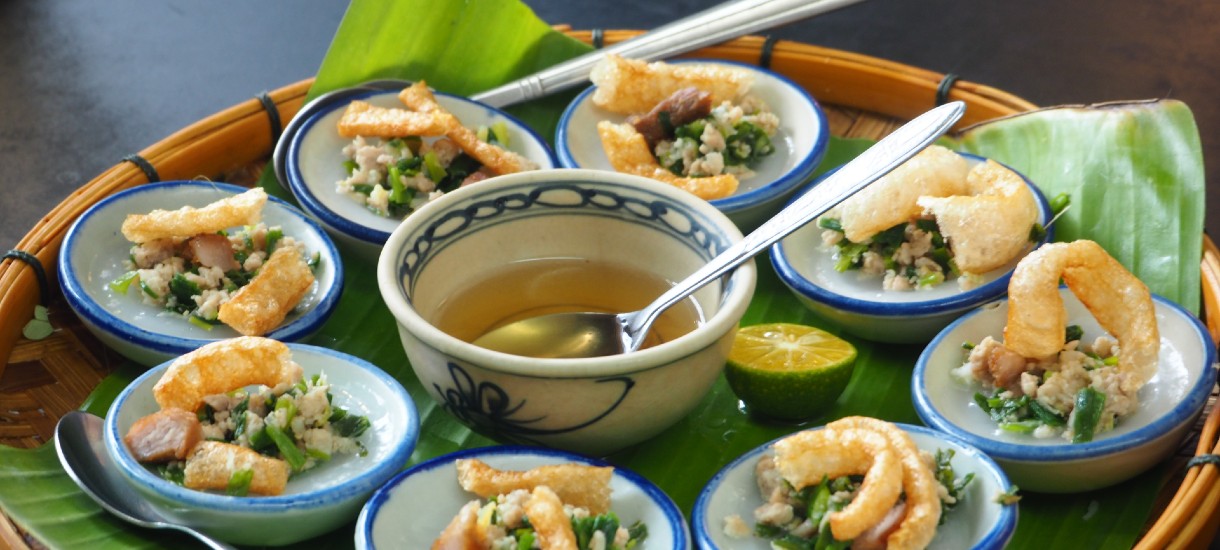
Banh Beo - one of the must-try food in Hue is served in a small portion
Central Vietnam cuisine is easy to recognize by 3 main factors:
- Spicy Flavor: Central Vietnam has the most severe weather in the country, with many storms and floods in summer; monsoons, and rainfall in winter. As a result, they prefer spicy dishes to keep their body warm.
- The Traits of Royal Delicacies: The royal cuisine can still be found in Hue - the former capital of the last dynasty of Vietnam. Prepared for royalty, these dishes are more colorful and well-decorated with sophisticated culinary techniques.
- Served in Small Portions: In Central Vietnam, many dishes are served in small portions, in small bowls and small plates. As the local produce in this region is not as diversified as in other regions, people here have been creative to create delicious dishes.
4 Must-try Dishes When You Travel To Central Vietnam
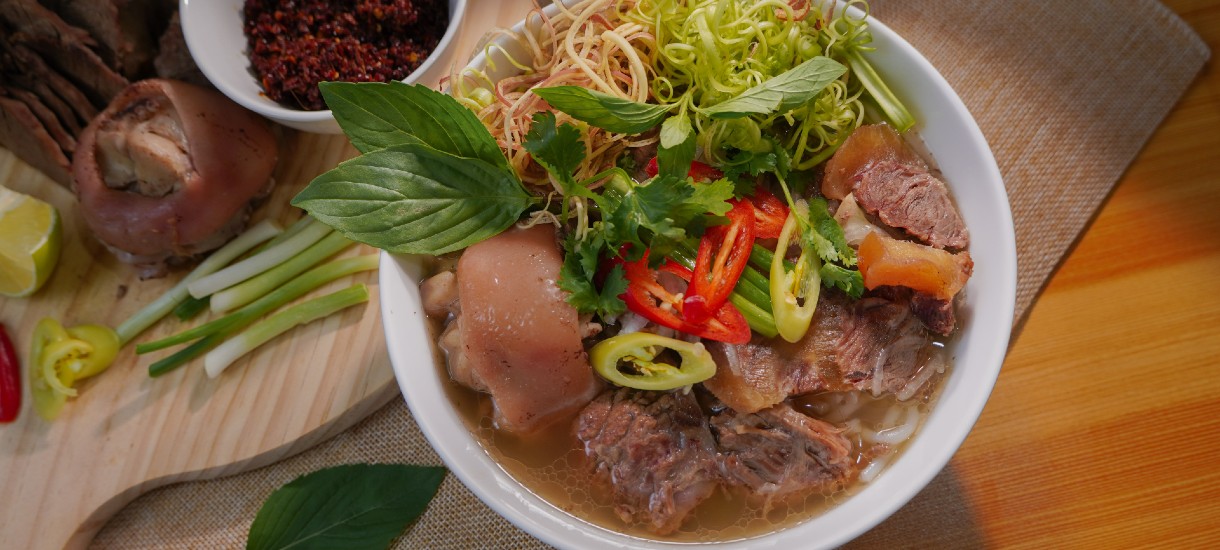
Bun Bo Hue - “the greatest soup in the world”
1. Bun Bo Hue (Highly recommended): During Anthony Bourdain's stay in Hue, he stated this dish is “the greatest soup in the world”. The broth has a strong flavor from lemongrass, shrimp paste, sugar, and chili oil.
2. My Quang: A noodle dish originated from Quang Nam Province. The yellow rice noodles are topped with shrimp, grilled pork, peanuts, hard-boiled quail eggs, and some local herbs.
3. Banh Bot Loc: These yummy, chewy dumplings are made from tapioca powder, usually filled with shrimp and pork belly, served with fried shallots, then dipped with sweet-sour fish sauce. A beloved appetizer or small snack.
4. Com Hen: This rice dish from Hue includes cooked baby river mussels, rice, peanuts, pork rinds, bean sprouts, and local herbs. Shrimp paste and chili paste are also added to boost the flavor. It is usually served together with broth from cooked mussels.
4. Southern Vietnamese Cuisine. A Strong, Dramatic Flavor.
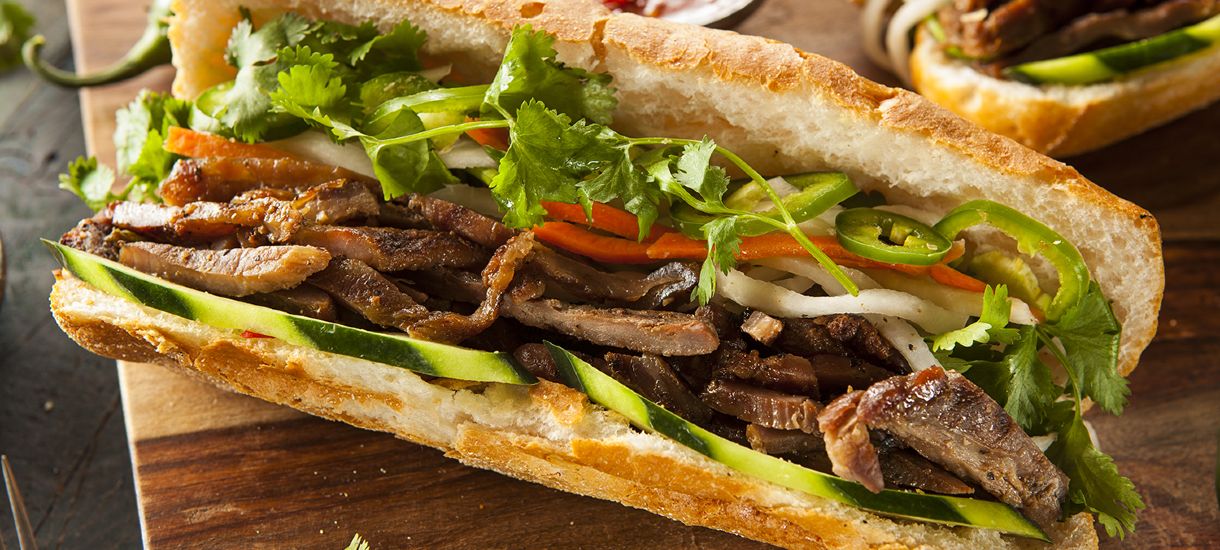
Banh mi - the popular breakfast of Saigoneers
Influced by the Chinese cuisine, the south of Vietnam presents to the world a table of delicacies with strong flavor which is marked by the following elements:
- Strong Flavor, Dramatic Taste: Southerners prefer food with stronger flavors with more salty and dramatic tastes. They use pure fish sauce, and hot chili peppers to spice up their dishes.
- Customized with Local Ingredients: People here adjusted those dishes that come from other regions to suit their taste. For example, Pho Saigon is slightly different from Pho Hanoi with sweet sauce (the special black sauce from the South) and a handful of fresh herbs and bean sprouts served aside.
- Influenced by Chinese Cuisine: Affected by Chinese from a long time ago, Southern cuisine becomes a perfect blend of Chinese and Vietnamese foods. Hu Tieu is a great sample. Each province in the South modifies this Chinese-originated dish with its regional ingredients.
4 Must-try Dishes When You Travel To Southern Vietnam
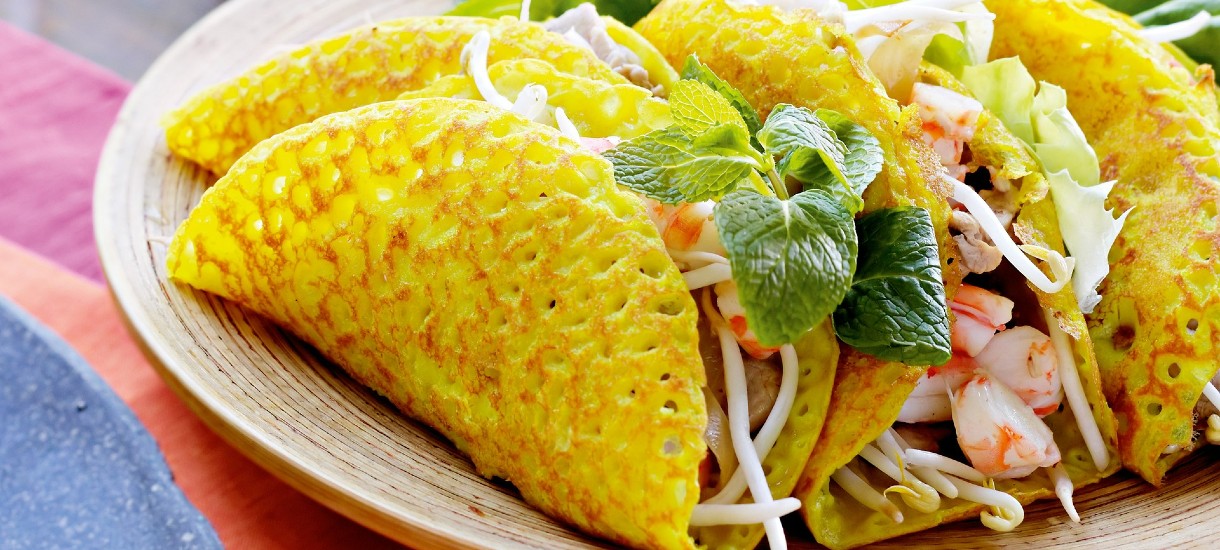
Banh Xeo - A delicious mixture of stir-fried pork belly, shrimp, bean sprouts, and green onion
1. Banh Xeo (Highly recommended): This Vietnamese savory ‘crepe’ was the first bite of Anthony Bourdain in Saigon. A plentiful mixture of stir-fried pork belly, shrimp, bean sprouts, and green onion is wrapped together inside the crispy yellow crepe.
2. Com Tam (Broken Rice): This is the signature dish of Saigon. Steamed broken rice (fractured rice grains) is topped with grilled pork ribs, pickles, shredded pork skin, a Vietnamese steamed omelet, or fried eggs.
3. Banh Canh Ghe: Vietnamese thick noodle soup with spider crab, fish cakes, and green onion. Different from other rice noodle dishes, the noodles of Banh Canh are made from tapioca flour, giving them a special chewy texture.
4. My Van Than: Or Wonton noodles is originated from Cantonese. There are two main parts of the dish: the dumplings filled with juicy grounded pork/shrimp, and chewy egg noodles, poured over with a clear broth from simmered pork bones.
5. Irresistible Street Foods That You Shouldn’t Miss (Video)
Once you breathe in the inviting smell, have your first bite, and savor the scrumptious taste, you’ll know why Vietnamese food is considered one of the best cuisines in the world. A gourmet always can see the balance and sophistication in the way the Vietnamese cook.
This video will take you to savor some of the best dishes that this country offers.


